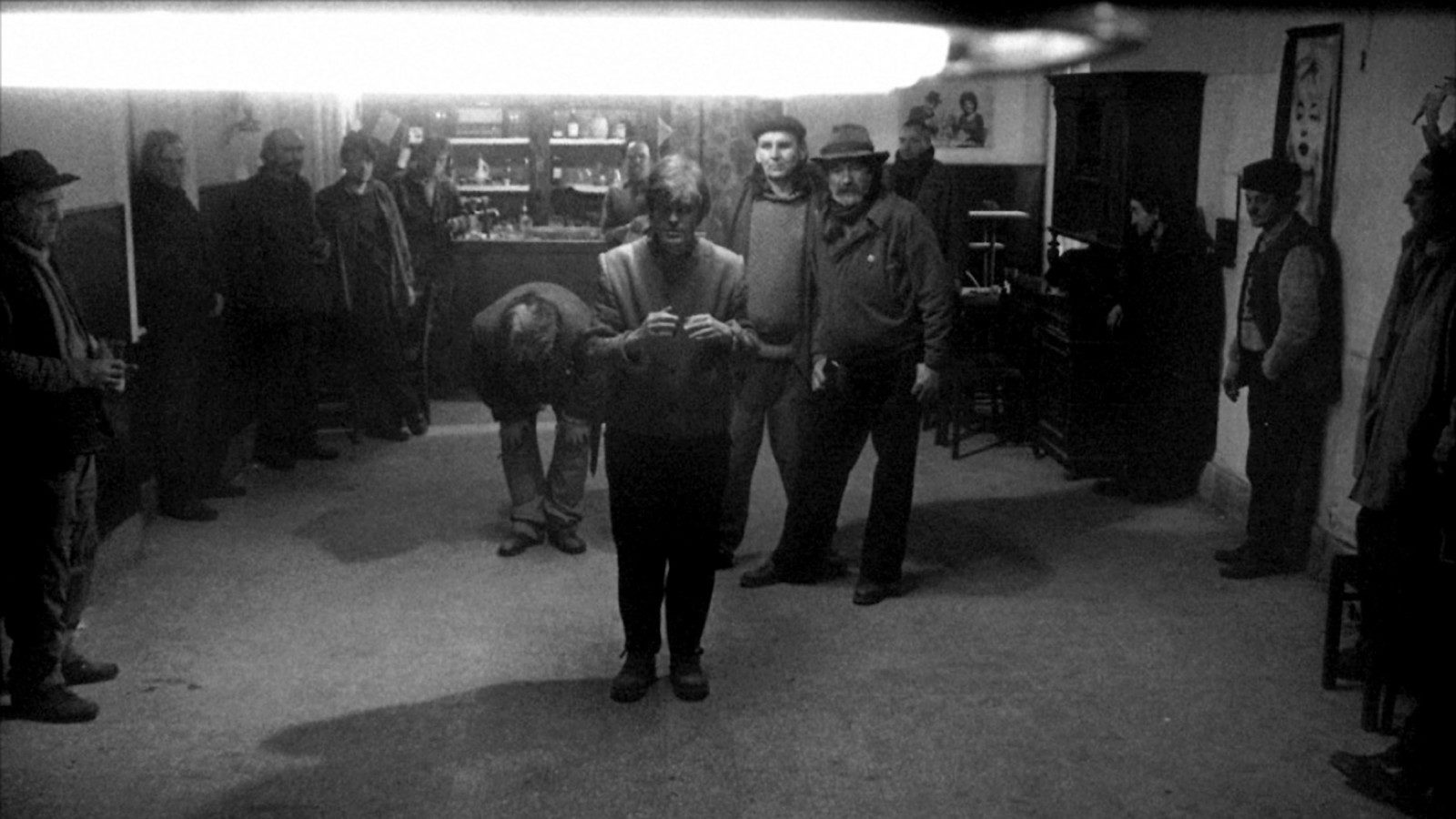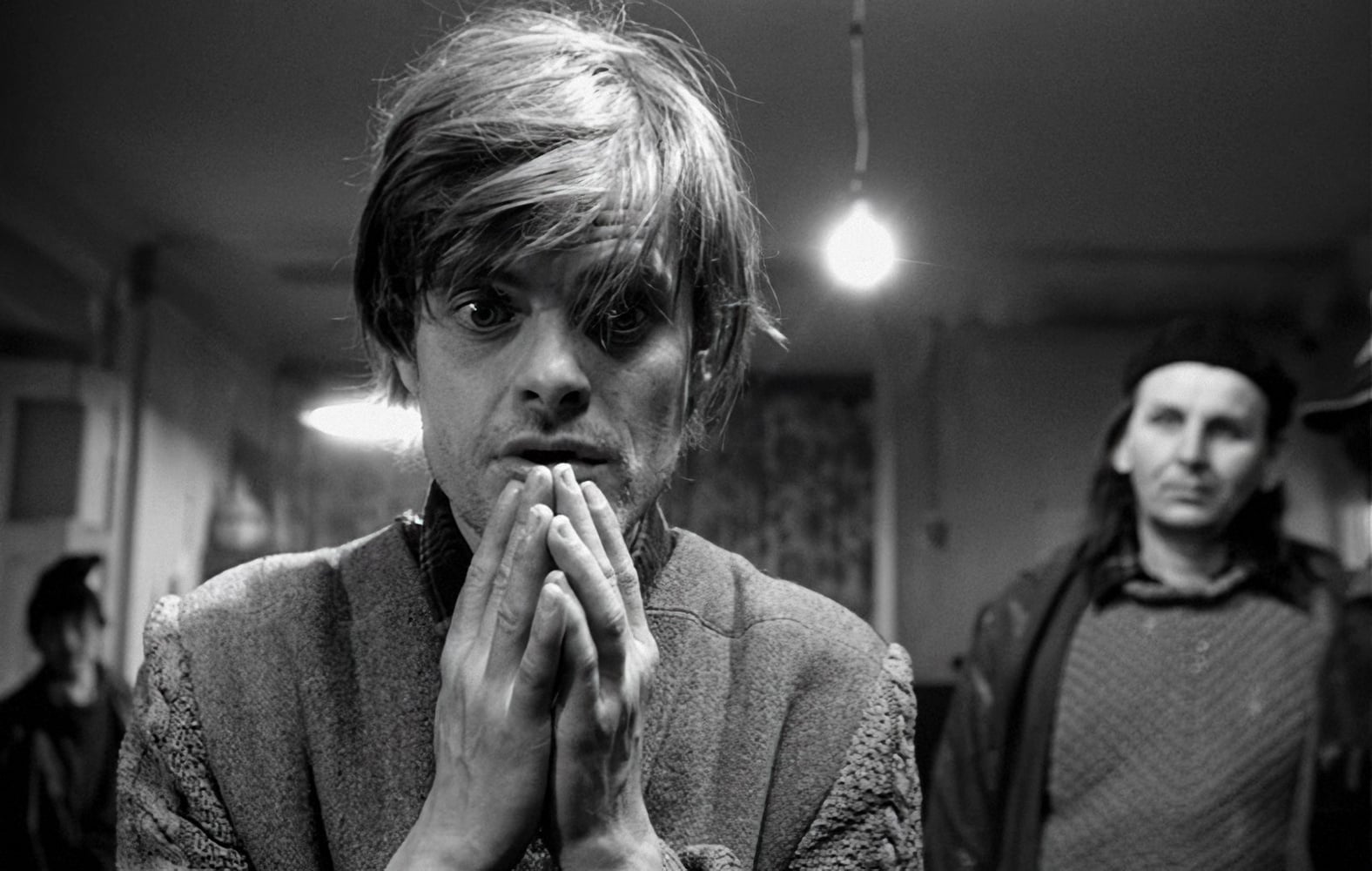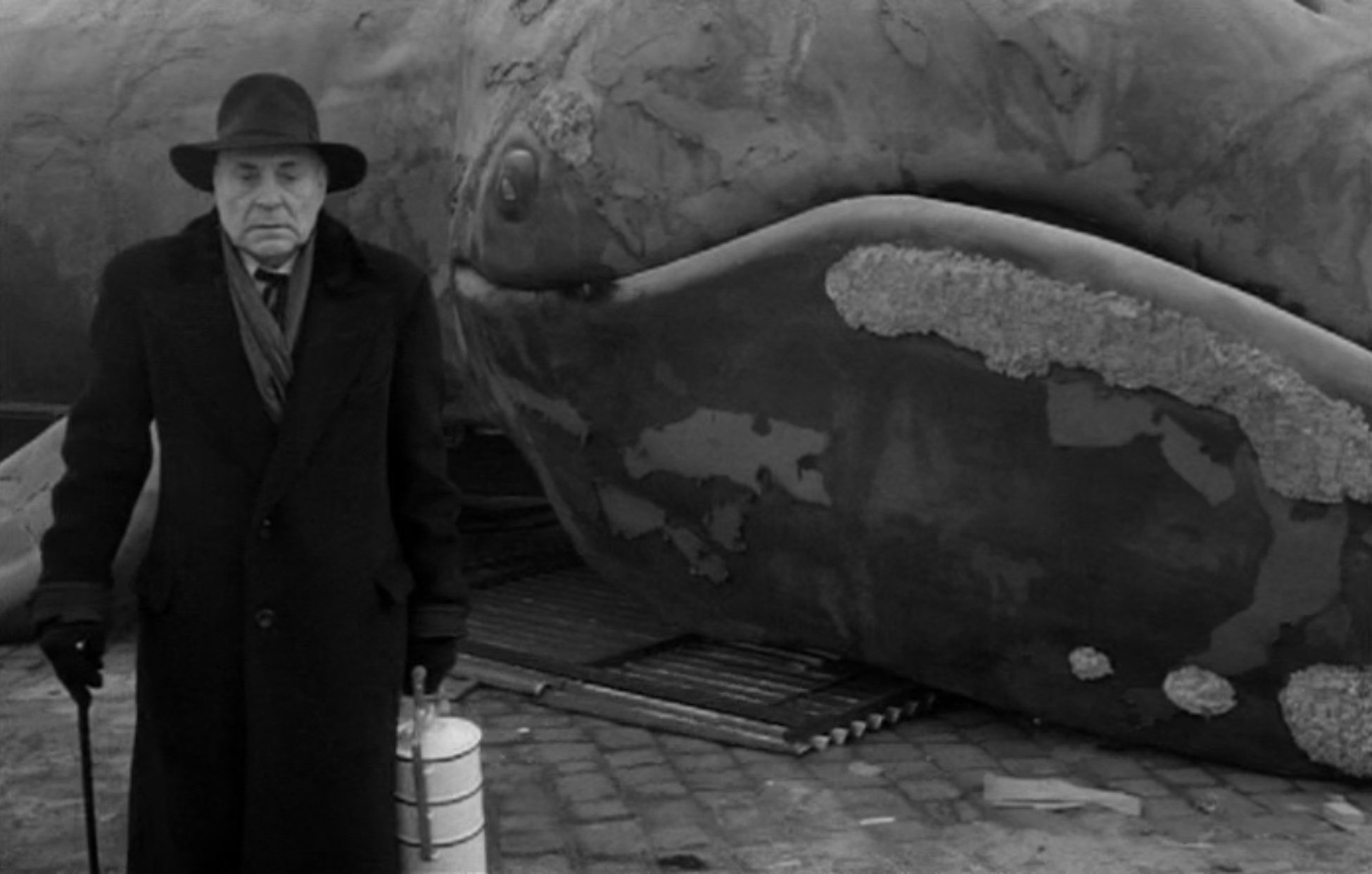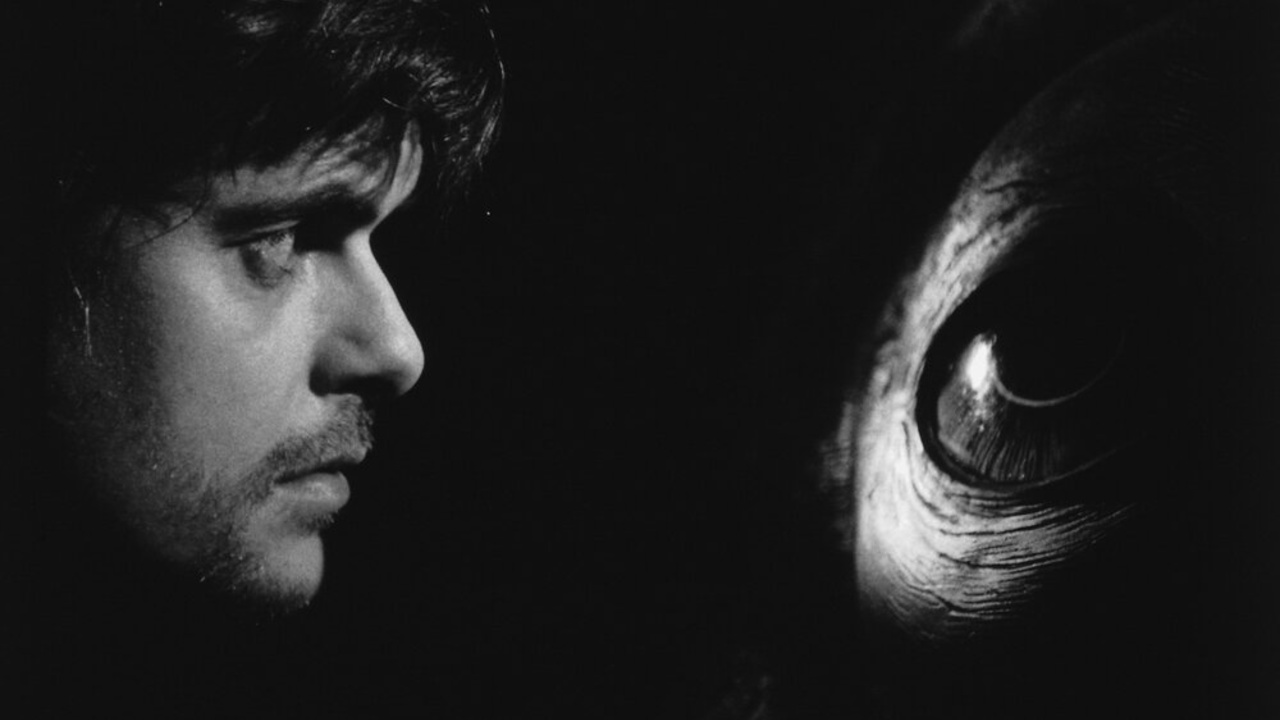*Una prima versione di questo articolo è comparsa sul "Manifesto" del 28 febbraio 2023.
Il simbolo di una generazione, ma anche a prescindere dalle generazioni, di iniziati che s’addentravano nei cunicoli infiniti, nelle gallerie illuminate dal tubo catodico nei primi anni Novanta, proprio come un Videodrome: una resa, una pianificata, pacificata resa nel ventre dell’immagine, che fosse cinematografica o televisiva, quella particolare, sublime forma di televisione scoccante a mezzanotte, poco importava.
Questo era – ed è ancora – il cinema di Béla Tarr. Erano le notti di «Fuori orario» officiate dal simulacro asincrono scapigliato di Ghezzi il quale, sacerdotale nella sua tenuta di calicò bianco, invocava metaplasmi, fantasmi fluttuanti nelle apnee – notti nebbiose fuori, accartocciate, stramazzate: gli inverni serali già alle cinque del pomeriggio prevaricavano sulla luce, e facevano sentire il loro brusio catramoso, la loro intima adiacenza al Nulla – in cui apparivano sullo schermo film come Perdizione o Satantango, più di sette ore, un cammino lungo, lento, dentro piani-sequenza pieni di materia galvanizzata, polvere e vento, il lento avventurarvisi, tenere gli occhi spalancati, estenuati, sperando di potervisi perdere.
Come nelle cinque ore di Fino alla fine del mondo, nella versione di Wenders, era nello stesso periodo, ma in una forma completamente diversa: la questione della «durata», della dilatazione del sintagma cinematografico, del racconto, era cosa essenziale in quegli anni, una sorta di reazione all’immagine pubblicitaria, breve, frugale, sottoposta al consumo immediato, tipica degli anni Ottanta. Il cinema di Béla Tarr era un universo alternativo a questo scenario, era fatto di forma, come autogena, come se il dispositivo macchina-da-presa avesse preso coscienza di sé e si legittimasse improntando sullo schermo la sua danza, la sua coreografia protratta, articolata, suadente, era fatto di certe marcate modalità di visione, di un’espressività sonante delle cose, nelle cose, a rivelarne le verità, cioè la durata, il tempo che le iscriveva, ne faceva scrittura, immagine. Ecco, era la durata la verità dell’evento, una durata avvolgente, magnetica – all’insegna di un bianco e nero livido: rassegna di sugne, scialbori, scrostature – tanto che ti tirava dentro, ti fagocitava, e la peristalsi di questo evento duraturo, di questa parvenza di eternità, ti restituiva personaggio, non più stanca persona in balia del mondo e del carcame diuturno: ti faceva fatto estetico.

Il primo dei racconti contenuti in Seiobo è discesa quaggiù di László Krasznahorkai, dai cui libri o soggetti Tarr ha tratto tre film, evoca il fluire universale di Eraclito, «tutto scorre, fluisce e gorgoglia l’acqua, ondeggia l’alito setoso del vento», e non solo lo nomina, lo dice, ma lo mima attraverso la scrittura ipotattica, la forma che endogena affiora, fiorisce – lunghi periodi senza stacchi: fluire di coordinate e subordinate, apposizioni, tubercoli frasali a rilanciare ogni volta il dettato – che è il corrispettivo letterario del cinema di piano-sequenza, di quello di Béla Tarr che sembra tradurre in immagini l’ipotassi del mondo, il suo scorrere continuo. Fluire al servizio del romanzesco: le storie di Krasznahorkai, spesso distopiche, prive di speranza, in epigrafe all’ultimo suo romanzo Herscht 07769 si legge «la speranza è un errore», trovano nel cinema di Tarr l’incarnazione perfetta: se c’è possibilità per il romanzo di trasporsi in film, allora il cinema di Tarr ne è l’esemplificazione, la rappresentazione in chiaroscuro delle contraddizioni e della violenza, della cupidigia e dell’innocenza violata, che scandiscono il romanzo novecentesco, qualcosa che risale a Musil, Céline, Faulkner, fino a Simenon da cui nel 2007 Tarr ricava L’uomo di Londra, sceneggiato insieme a Krasznahorkai.
Béla Tarr sarà oggi a Bari all’Anche Cinema per la rassegna «Registi fuori dagli scheRmi», occasione per proiettare la versione restaurata delle Armonie di Werckmeister che ventitré anni fa inaugurava il nuovo millennio trasponendo lo spirito apocalittico del romanzo di Krasznahorkai Melanconia della resistenza. Simboli, allegorie di una favola nera, personaggi eponimi dell’umano, scorci cinerei, scalcinati, ischeletriti: tutti gli elementi fondanti del cinema di Tarr si ritrovano in questo capolavoro come fosse un presagio per il millennio che stava iniziando.
Sarebbero passati undici anni prima che Tarr tornasse a dirigere il suo ultimo stupefacente film, Il cavallo di Torino, ennesima messa a fuoco di un’umanità alla deriva. Eppure resta la possibilità – sia pure un lacerto, un’eco – di armonia: se la macchina da presa fa luce sull’inanità, resta la coscienza, l’autodeterminazione di questo sguardo artificiale, e resta la luce che usa per mostrare e per sgranare inesorabilmente i passi, le mosse di un incedere, di un durare, un fluire stupefacente.

Through the universe chiaroscuro the dark fairytales of Béla Tarr.
Traduzione di Serena Ciccarone, Silvia Pellecchia, Eliana Carlucci.
The symbol of a generation, even regardless of all generations: initiates delving into timeless wormholes, into the early nineties cathode-ray tube lighted tunnels as in a Videodrome. A surrender. A planned and pacified surrender, incubated in the womb of both cinematic and televisual image: that specific, sublime midnight broadcasting. This was and still is Béla Tarr. Back to the Fuori Orario nights officiated by Ghezzi’s cinema - that asynchronous, disheveled simulacrum - summoning metaplasms and fluctuating ghosts in the misting nights, priestly in a white calico robe. Nocturnal winters abused their power over the dusk light and let their tarry murmur be sensed along with their innermost adhesion to the Void. Those nights when movies like Perdition and Satantango - a plodding, lingering seven-hour pilgrimage throughout long takes teeming with galvanised matter, wind and dust - would shine out of the screen; keeping your eyes wide open and jaded venturing the void while yearning for perdition.
As in the years of the five-hour movie Until the End of the World - yet in an utterly different way - the “duration” matter, the stretching of the cinematic and narrative syntagm was essential. It was a sort of reaction to the frugal and concise advertising image subject to the immediate consumption typical of the eighties. Béla Tarr’s cinema is configured in a separate universe far from that scenario. A movie camera so aware of itself that it validates its autogenous matter by choreographing its enticing intricate protracted dance. A Cinema as multiple emphasised visions, echoing vividness of the objects, into the objects, which unveils their truth: their life, their time - inscribing and turning them into words, pictures.
There, the truth of the event was its life, a magnetic, immersive duration that lured and engulfed you - in the spirit of a bruised black and white: an exhibit of blubber, scraping and dullness - and its perpetual peristalsis handed you back the character. A no-longer jaded character at the mercy of reality and its undying carcass: the final aesthetic act.
The first story of Seiobo There Below by László Krasznahorkai - whose books and characters inspired three of Tarr’s films - evokes Heraclitus’ Universal Flux «everything around it moves , the water moves, it flows, it arrives and cascades; now and then the silken breeze sways». Not only does he bring it up, he means it and mimes it through the hypotactic writing. A flux of long gapless coordinates, subordinates and appositions: phrasal tubercles persistently reviving the dictation. The literary counterpart of the long take cinema, Béla Tarr’s cinema, appears to translate the cosmos’ hypotaxis, its continuous flux into images: that endogenous matter emerging and blooming. Flowing at the book’s service: Krasznahorkai’s stories, mainly dystopian and hopeless - the epigraph of his latest novel Herscht 07769 quotes «hope is an error» - are fully embodied in Tarr’s cinema. If the novel can be film adapted then Tarr’s cinema is its exemplification. It depicts in chiaroscuro contradictions, violence, greed and violated innocence which articulate the twentieth-century novel dating back to Musil, Céline, Faulkner as well as Simenon whose novel inspired the 2007 Béla Tarr film The Man from London scripted together with Krasznahorkai.

Tonight, the Hungarian director is attending the Registi fuori dagli scheRmi exhibition at the Anche Cinema film theatre in Bari. A chance to screen the Wrekmeister Harmonies restored version which twenty three years ago ushered in the new millennium by transposing the apocalyptic spirit of Krasznahorkai’s novel The Melancholy of Resistance.
Symbols, allegories of a dark fairytale; characters eponym of the human; ash-grey, scraped off, scrawny foreshortening: the cornerstones of Tarr’s cinema. An omen for the upcoming millennium. He had us waiting eleven years for his comeback with his last astonishing film The Turin Horse, the umpteenth depiction of a drifting humanity. Yet, a fragment, an echo of Harmony is still possible: if the movie camera sheds its light on inanity, then conscience - the self-determination of this artificial gaze - and light stand. A light revealing and inexorably marking the steps, the enduring and solemn strides, the dazzling flux.
